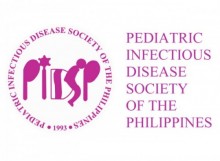Journal 2019 Vol.20 No.2
Clinical Profile, Microbiology, Management, and Outcome of Pediatric Brain Abscess at the University of the Philippines- Philippine General Hospital: A 5-year Retrospective Study (2012-2016)
Carla Maja Lizl A. Montaña, M.D., Anna Lisa T. Ong-Lim, M.D. & John Andrew T. Camposano, M.D.
Abstract
Objective: To determine the clinical profile, microbiology, management, and outcome of pediatric brain abscess at a tertiary hospital in the Philippines from 2012 to 2016.
Methods: A retrospective study and review of medical records of 50 patients aged 18 years old and below diagnosed with brain abscess from 2012 to 2016 was performed.
Results: Majority of patients affected were 10 years old and below (74%), with no gender predilection, and mostly underweight/wasted (68%). Coverage for common vaccine-preventable pathogens was low (38% for H. influenzae type b, 2% for S. pneumoniae). Most common signs and symptoms on admission were fever (62%), vomiting (50%), and headache (50%). The top pre-disposing condition was congenital heart disease (46%), mostly Tetralogy of Fallot (33%). Methicillin-resistant Staphylococcus aureus (MRSA) was isolated in 38%) of cases. Sterile cultures comprised 68% of cases. There were two cases of tuberculous abscess. Empiric antibiotics administered for patients seen in 2012 were penicillin G and chloramphenicol, with a shift to a third-generation cephalosporin and metronidazole in the succeeding years. Aspiration with or without drainage was performed in majority of cases (85%). Six underwent complete excision and had a shorter mean length of stay of 57 days, and a lower morbidity rate of 17% with no mortalities. The overall mean length of hospital stay was 65 days. Residual neurologic deficit was observed in 28%, mostly extremity weakness. Mortality rate was 6.8%. No statistical association was found between a predisposing condition and affectation of a particular area of the brain using the Fisher exact test.
Conclusion: There should be a high index of suspicion for brain abscess among patients with pre-disposing conditions (i.e. paracranial infection, cyanotic congenital heart disease) presenting with fever, headache, and vomiting. Common etiologic agents in this study were MRSA and Enterococcus. The isolates were sensitive to the antibiotics recommended for empiric therapy, particularly parenteral third generation cephalosporin + metronidazole for 6 to 8 weeks. Patients with sterile cultures were also continued on this regimen. With the high resistance rates to oxacillin, vancomycin should be considered for abscesses arising from paracranial infections and for those with breaks in the skull post-trauma. There was an overall reduction in mortality due to improved imaging studies andidentification of pathogens for definitive treatment, as well as improved surgical techniques over time. A considerable number of affected children however had neurologic deficits upon discharge.
Keywords: Pediatric brain abscess
https://doi.org/10.56964/pidspj20192002006
| View Full Article in PDF format |
Journal 2019 Vol.20 No.2 Original Articles 4pidsp@uplink.com.ph2022-12-11T03:34:21+00:00
